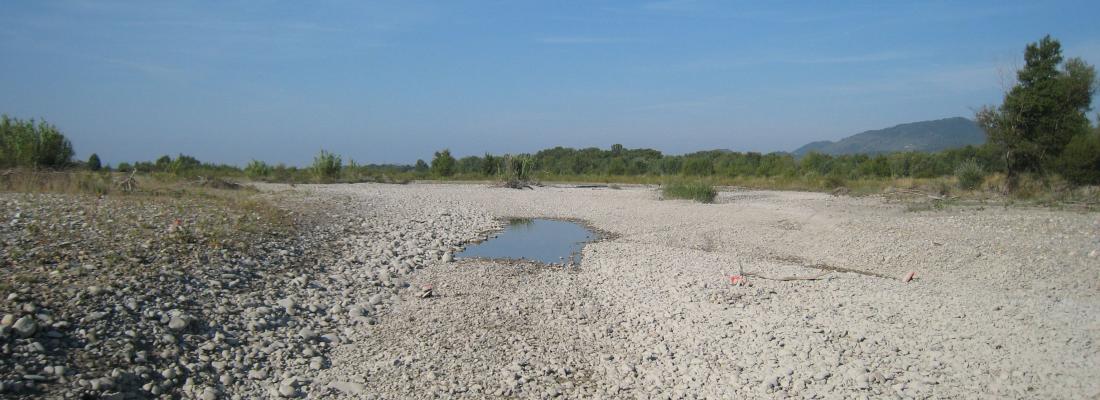Climate change and risks Reading time 2 min
Citizen scientists in support of drying rivers
Published on 19 July 2023

Rivers are increasingly drying out because of climate change and growing water needs. River networks are essential to our well-being and face considerable threats, yet the drying of river networks is poorly studied, understood or mapped.
The European Union DRYvER project, led by INRAE, aims to change that. Together with an international team, INRAE experts developed a unique open-source smartphone app: DRYRivERS*. Citizen scientists around the world are able to contribute to this participatory project seeking to better understand flow intermittence in rivers.
By January 2023, DRYRivERS had 1,277 users who had logged more than 4,200 observations on 1,900 waterways in Europe and around the world. Users come from 19 countries, of which 41% are in Hungary, 31% are in France, 6% are in Spain and 5% are in Czechia.
The project is already producing results. Data collected from the DRYRivERS app allow for real-time monitoring of rivers and supply precious information to river managers. For example, the data have shown that intermittent rivers are present in all the world’s climatic regions. The data collected also indicate that headwater areas, near upstream watershed boundaries and drained by smaller rivers, and streams in particular, are prone to drying events.
This will allow river- and water-management organisations to take appropriate and locally specific measures to manage water use and water-use restrictions. This is already the case for the organisation managing the Ain River and its tributaries in eastern France, which is using the app in the field. Agents from the organisation, along with municipal employees and other partners are able to submit contributions directly on the app.
The app is also a useful for disseminating information to the public and raising awareness of river drying, be it natural or anthropogenic.
* The app was awarded a European Union Prize for Citizen Science on Monday, 22 May 2023. The prize was presented by Ars Electronica, a unique organisation that recognises artists and scientists working with new technologies and investigating how new technologies affect our ways of living and working.
This project has received funding from the European Union’s Horizon 2020 research and innovation programme under grant agreement No. 869226. 25 partners across 16 countries. 2020–2024
How does the app work?
There are three pieces of information to provide: (1) the location of the river site; (2) the in-channel conditions (i.e., whether the channel contains flowing water, disconnected standing pools or is dry); and (3) a photo of the site. Drawing on smartphone GPS systems, users can determine their location or find existing sites on a map. The app caches all necessary data if the user is out of the service area, which can then be uploaded to the servers once a network connection is available. All data collected by the public via the DRYRivERS app are available on the open-access DRYvER web site (https://www.dryver.eu/app).
Truchy A. et al. (2023). Citizen scientists can help advance the science and management of intermittent rivers and ephemeral streams. BioScience, biad045, https://doi.org/10.1093/biosci/biad045
